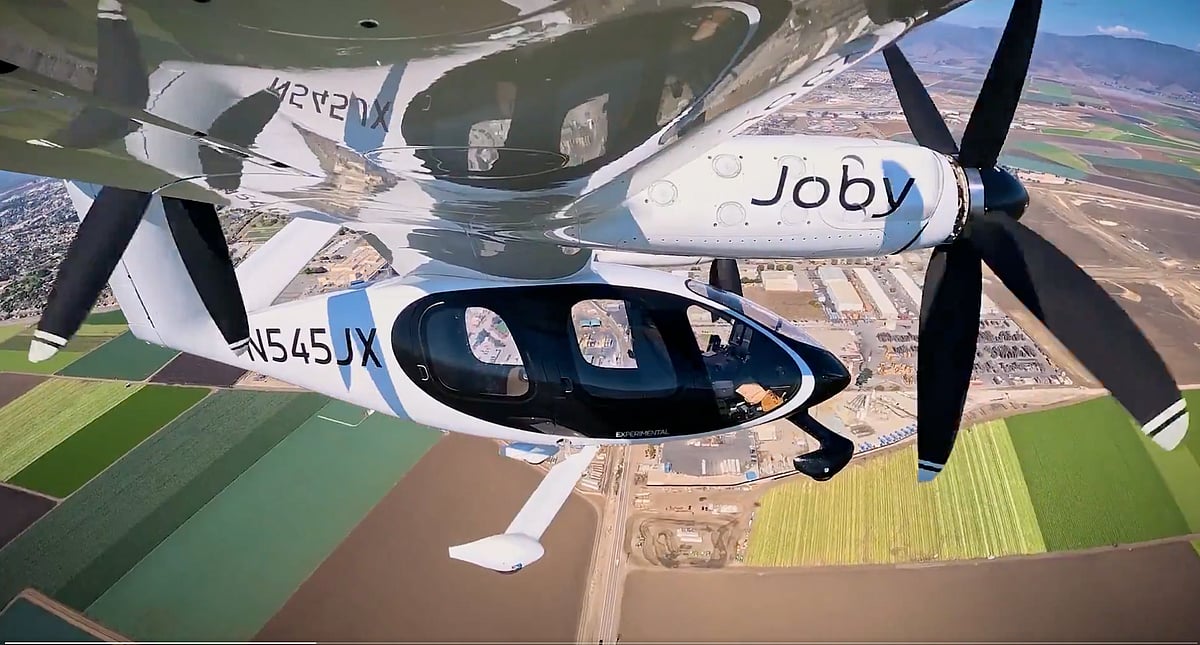Air taxis, aka eVTOL, near 'moment of truth': What to watch out for
Air taxi revolution: The ascent of electric vertical takeoff and landing aircraft

The electric Vertical Take‑Off and Landing (eVTOL) space is soaring towards its “moment of truth.”
Conversations and policy directions — from the Five Eyes deal, to program updates to speculative market chatter — underscore that many observers see 2025–2026 as a pivotal phase.
Will the bold promises of the so-called urban air mobility (UAM) become reality?
A number of factors are at play: execution in certification, infrastructure and capital discipline.
Here's the elephant in the room: Will the public accept it as a new mode of transport? Let's jump right in:
The eVTOL sector is rapidly gaining momentum, stirred by increasing public interest and fresh announcements. Much has advanced in terms of next-gen air taxi technology, as demonstrated by Archer, Joby, Beta Technologies and the like. There's so much speculation, too, surrounding the industry.
A cascade of event signals that key players, investors, and enthusiasts believe 2025 onward could be transformative.
Some recurring themes: development in regulations, commercialisation steps, integration with urban mobility, and investor/speculator interest.
Regulatory & infrastructure
Several social media posts (e.g. by eVTOLBuzz) hint at tightening regulatory frameworks and renewed focus on airworthiness and certification roadmaps.
As eVTOL makers transition from concept to prototype to production intent, they must satisfy aviation regulators (FAA, EASA, CAAs). Expect more public announcements of compliance milestones, test flights, and site‑approval updates.
At the same time, infrastructure (vertiports, charging networks, ground services) is being actively discussed. Tweets from Joby Aviation and others likely point to agreements or plans to build “landing pads” or urban vertiports in key metro hubs. The coordination between city planners, energy grids, and aviation regulators is gaining urgency.
Commercial launch & pilot programs
Several accounts (e.g. from Joby Aviation) point to impending or ongoing pilot routes. Early adopters might see short point‑to‑point “air taxi” services in constrained corridors (e.g. across rivers, congested traffic corridors).
These pilots serve as both proof of concept and marketing for regulatory bodies, and help identify operational challenges (noise, battery management, routing). The transition from R&D to commercial operations marks a crucial inflection point.
Strategic partnerships & ecosystem formation
Industry observers point to the need for solid, efficient alliances: with airports, city authorities, energy/charging firms, or software/air-traffic management players. The eVTOL ecosystem isn’t just the aircraft — you also need software, charging, maintenance, traffic control, ground handling, and passenger interfaces. Strategic partnerships will increasingly decide which firms survive.
Technology iteration & energy/range Improvements
Demos, flight tests, or interviews — typical for eVTOL outreach. Such events emphasise improvements in key factors: battery energy density, motor efficiency, redundancy systems, and noise mitigation.
Expect more claims of incremental gains: longer range, faster charging cycles, quieter operations, and higher payloads. Those gains translate directly into commercial viability.
Explainer: eVTOL trends to know
What is an eVTOL?
An eVTOL (electric Vertical Take-Off and Landing) aircraft uses electric propulsion to hover, take off, and land vertically — combining rotor/tilt-rotor/tilt‑wing/ducted fan technologies in various designs. The goal is urban/short-haul flight without runways.
Key trend drivers
Certification & regulation: Early eVTOLs must be certified under evolving rules. Regulatory timelines often drive the pace of announcements and partnerships.
Vertiport & infrastructure investment: Airports are far from the whole game — city “vertiports,” charging stations, and land-use approvals become essential.
Operational pilots & phases: Companies will scale gradually: first demonstration flights, then limited commercial service, then expansion.
Investor & market sentiment: Because many eVTOL firms are pre‑revenue, investor confidence, media narratives, and speculation often become intertwined with engineering progress.
Tech & efficiency gains: Battery tech, motor design, weight reduction, and noise control all contribute to whether an eVTOL becomes viable.
Risks & challenges
Battery / energy density: Current battery technology limits range and payload. Currently, the "best" batteries balance cell-level energy density (>300 Wh/kg) with pack-level performance (accounting for casing, cooling, and wiring, typically 75-85% of cell density), fast charging (5-10 min for 80 km trips), cycle life (>2,000 cycles), and aviation-grade safety (e.g., no thermal runaway during 15C discharge peaks for takeoff/landing). Incremental improvements in this area would go a long way and increasing range while keeping weight.
Air traffic integration: Managing many small aircraft in dense airspace is nontrivial. eVTOLs operate in low-altitude urban airspace (500-5,000 ft). This lacks robust air traffic control (ATC) frameworks compared to traditional aviation. Current systems are not equipped to handle high-density eVTOL operations (e.g., 100s of simultaneous flights in cities). Regulatory bodies like FAA and EASA require new standards for autonomous flight, collision avoidance, and vertiport integration. This could delay certification. NASA's air taxi studies estimate 10-15 years for fully integrated urban air traffic systems due to complexity in detect-and-avoid tech and UTM (unmanned traffic management). Currently, it's unclear how a rumoured partnership between Tesla (which is developing Full Self Driving for cars) and air taxi developer Archer could help speed up this process enough for regulators and the public to accept it.
Noise and public acceptance: This is a key challenge. Air taxis may be less niosier than traditional helicopters, but too many of them flying overhead could be a major challenge. Urban residents may resist overhead noise or safety concerns.
Capital intensity & cash burn: Prototypes, testing, certification, infrastructure all cost heavily before revenue.
What to watch in 2025 and onward
Milestone announcements — e.g. “certification achieved,” “first commercial route launched,” “cities approve vertiport plans.”
Partnerships with governments, airports, energy firms — these help reduce risk and share cost.
Operational data from pilot programmes — reliability, utilization, cost per passenger-mile.
Technological breakthroughs — battery improvements or modular/multi-use designs.
Regulatory clarity — how fast can eVTOLs be integrated into airspace by local regulators?
Sign up for the Daily Briefing
Get the latest news and updates straight to your inbox
Network Links
GN StoreDownload our app
© Al Nisr Publishing LLC 2025. All rights reserved.